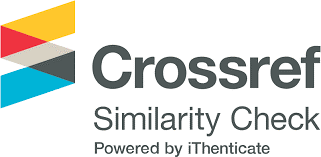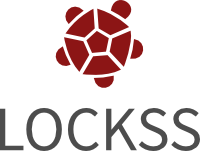Generalized Average Model of the Class-E2 DC-DC Resonant converter
DOI:
https://doi.org/10.18618/REP.2005.1.029036Keywords:
Circuit modeling, dc-dc power converters, resonant convertersAbstract
In this paper, the generalized average model of the Class-E$^2$ DC-DC resonant converter has been introduced. The standard average model is not interesting in resonant converters due to their large waveform oscillations. In addition, steady-state approaches restrain the converter to hysteresis control. The resonant tank voltage, reconstructed by the fundamental component, as performed in LLC converters by extended describing function, is not suitable for the Class-E$^2$ topology because the inverter/rectifier interface voltage requires, at least, the third-order harmonic usage. This work relies on the generalized average method to perform the large-signal and small-signal models of the Class-E$^2$ converter. This paper shows how to systematically deal with the following modeling issues: negative index from the convolution summation, complex numbers from the Fourier coefficients and high number of state-space variables. The theoretical approach is confirmed by measurement in an assembled 800 kHz Class-E$^2$ converter based on voltage-controlled oscillator.
Downloads
References
[ 1] Z. Shu, Y. Fengfa, W. Yijie, J. M. Alonso, “A 500-kHz ZVS Class-E Type DC–DC Converter With Two Anti-Series mosfets Topology”, IEEE Transactions on Power Electronics, vol. 38, no. 9, pp. 10810–10820, September 2020, doi:https://doi.org/10.1109/TPEL.2023.3287161 DOI: https://doi.org/10.1109/TPEL.2023.3287161
[ 2] T. Nagashima, X. Wei, E. Bou, E. Alarc ́on, M. K. Kazimierczuk,H. Sekiya, “Analysis and Design of Loosely Inductive Coupled Wire-less Power Transfer System Based on Class-E2 DC-DC Converter forEfficiency Enhancement”, IEEE Transactions on Circuits and Systems I: Regular Papers, vol. 62, no. 11, pp. 2781–2791, November 2015, doi:https://doi.org/10.1109/TCSI.2015.2482338. DOI: https://doi.org/10.1109/TCSI.2015.2482338
[ 3] R. D. Middlebrook, S. Cuk, “A General Unified Approach to Modelling Switching-Converter Power Stages”, in 1976 IEEE Power Electronics Specialists Conference, pp. 18–34, 1976, doi:https://doi.org/10.1109/PESC.1976.7072895. DOI: https://doi.org/10.1109/PESC.1976.7072895
[ 4] E. V. Dijk, J. N. Spruijt, D. M. O’Sullivan, J. B. Klaassens, “PWM-Switch Modeling of DC-DC Converters”, IEEE Transactions on Power Electronics, vol. 10, no. 6, pp. 659–665, November 1995, doi:https://doi.org/10.1109/63.471285. DOI: https://doi.org/10.1109/63.471285
[ 5] J. A. da Rocha Carvalho, F. L. Tofoli, “Small-Signal Model Validation of a SEPIC Converter based on the Three-State Switching Cell in CCM using the PWM Switch Model”, in 2017 Brazilian Power Electronics Conference (COBEP), pp. 1–6, 2017, doi:https://doi.org/10.1109/COBEP.2017.8257220. DOI: https://doi.org/10.1109/COBEP.2017.8257220
[ 6] M. C. N. E. Niculescu, D. M. Purcaru, “Modelling the PWM Zeta converter in Discontinuous Conduction Mode”, in MELECON 2008 - The 14th IEEE Mediterranean Electrotechnical Conference, pp. 651–657, 2008, doi:https://doi.org/10.1109/MELCON.2008.4618509. DOI: https://doi.org/10.1109/MELCON.2008.4618509
[ 7] E. Vuthchhay, C. Bunlaksananusorn, H. Hirata, “Dynamic Modeling and Control of a Zeta Converter”, in 2008 International Symposium on Communications and Information Technologies, pp. 498–503, 2008, doi:https://doi.org/10.1109/ISCIT.2008.4700242. DOI: https://doi.org/10.1109/ISCIT.2008.4700242
[ 8] P. Wang, X. Chen, C. Tong, P. Jia, C. Wen, “Large- and Small- Signal Average-Value Modeling of Dual-Active-Bridge DC–DC Converter With Triple-Phase-Shift Control”, IEEE Transactions on Power Electronics, vol. 36, no. 8, pp. 9237–9250, August 2021, doi:https://doi.org/10.1109/TPEL.2021.3052459. DOI: https://doi.org/10.1109/TPEL.2021.3052459
[ 9] X. W. X. Yue, F. Blaabjerg, “Review of Small-Signal Modeling Methods Including Frequency-Coupling Dynamics of Power Converters”, IEEE Transactions on Power Electronics, vol. 34, no. 4, pp. 3313–3328, April 2019, doi:https://doi.org/10.1109/TPEL.2018.2848980. DOI: https://doi.org/10.1109/TPEL.2018.2848980
[ 10] Y.-D. Choi, D.-Y. Lee, D.-S. Hyun, “A Study on the New Control Scheme of Class-E inverter for IH-jar Application with Clamped Voltage Characteristics using Pulse Frequency Modulation”, in Conference Record of the 2002 IEEE Industry Applications Conference, pp. 1346–1351, 2002, doi:https://doi.org/10.1109/IAS.2002.1042732. DOI: https://doi.org/10.1109/IAS.2002.1042732
[ 11] S. H. L. Tu, H.-W. Yeh, “A PWM Controller with Table Look-up for DC-DC Class E Buck/Boost Conversion”, in 2013 IEEE International Conference of Electron Devices and Solid-state Circuits, pp. 1–2, 2013, doi:https://doi.org/10.1109/EDSSC.2013.6628039. DOI: https://doi.org/10.1109/EDSSC.2013.6628039
[ 12] Y. Li, X. Ruan, “Output Current Limitation for ON–OFF Controlled Very-High-Frequency Class E DC–DC Converter”, IEEE Transactions on Industrial Electronics, vol. 69, no. 11, pp. 11826–11831, November 2022, doi:https://doi.org/10.1109/TIE.2021.3116594. DOI: https://doi.org/10.1109/TIE.2021.3116594
[ 13] A. Celentano, F. Pareschi, R. Rovatti, G. Setti, “A Zero-Transient Dual-Frequency Control for Class-E Resonant DC–DC Converters”, IEEE Transactions on Power Electronics, vol. 38, no. 2, pp. 2105–2114, February 2023, doi:https://doi.org/10.1109/TPEL.2022.3208816. DOI: https://doi.org/10.1109/TPEL.2022.3208816
[ 14] Y. Li, X. Ruan, L. Zhang, Y. K. Lo, “Multipower-Level Hysteresis Control for the Class E DC–DC Converters”, IEEE Transactions on Power Electronics, vol. 35, no. 5, pp. 5279–5289, May 2020, doi:https://doi.org/10.1109/TPEL.2019.2940043. DOI: https://doi.org/10.1109/TPEL.2019.2940043
[ 15] N. J. Dahl, A. M. Ammar, A. Knott, M. A. E. Andersen, “An Improved Linear Model for High-Frequency Class-DE Resonant Converter Using the Generalized Averaging Modeling Technique”, IEEE Journal of Emerging and Selected Topics in Power Electronics, vol. 8, no. 3, pp. 2156–2166, September 2020, doi:https://doi.org/10.1109/JESTPE.2019.2945182. DOI: https://doi.org/10.1109/JESTPE.2019.2945182
[ 16] R. Engleitner, F. E. Bisogno, J. R. Pinheiro, C. Rech, L. Michels, M. Radecker, “Small-Signal Modeling of a DC-DC Class-E Piezo-converter based on Generalized Averaging Method”, in 2011 IEEE International Symposium on Industrial Electronics, 2011, doi:https://doi.org/10.1109/ISIE.2011.5984191. DOI: https://doi.org/10.1109/ISIE.2011.5984191
[ 17] E. X.-Q. Yangi, Extended Describing Function Method for Small-Signal of Resonant and Multi-Resonant Converters, Ph.D. thesis, Faculty of the Virginia Polytechnic Institute and State University,Blacksburg, Virginia, 1994.
[ 18] C. H. Chang, E. C. Chang, C. A. Cheng, H. L. Cheng, S. C. Lin, “Small Signal Modeling of LLC Resonant Converters Based on Extended Describing Function”, in 2012 International Symposium on Computer, Consumer and Control, pp. 365–368, 2012, doi:https://doi.org/10.1109/IS3C.2012.99. DOI: https://doi.org/10.1109/IS3C.2012.99
[ 19] P. Azer, A. Emadi, “Generalized State Space Average Model for Multi-Phase Interleaved Buck, Boost and Buck-Boost DC-DC Converters: Transient, Steady-State and Switching Dynamics”, IEEE Access, vol. 8, pp. 77735–77745, 2020, doi:https://doi.org/10.1109/ACCESS.2020.2987277. DOI: https://doi.org/10.1109/ACCESS.2020.2987277
[ 20] A. Ayachit, M. K. Kazimierczuk, “Averaged Small-Signal Model of PWM DC-DC Converters in CCM Including Switching Power Loss”,IEEE Transactions on Circuits and Systems II: Express Briefs, vol. 66,no. 2, pp. 262–266, February 2019, doi:https://doi.org/10.1109/TCSII.2018.2848623. DOI: https://doi.org/10.1109/TCSII.2018.2848623
[ 21] F. J. Nogueira, L. J. G. Resende, R. M. Ferraz, F. O. Coelho, E. S. Silva, G. M. Soares, H. A. C. Braga, “Modelagem e Controle de um Driver de LEDs de Baixa Frequência baseado no Pré-Regulador Boost”, Eletrônica de Potência, vol. 22, no. 4, pp. 350–361, Dezembro 2017, doi:https://doi.org/10.18618/REP.2017.4.2699. DOI: https://doi.org/10.18618/REP.2017.4.2699
[ 22] Y. Zhang, S. Buso, “Generalized Average Modeling of Bidirectional Interleaved Boost with Coupled Inductors Converter”,in 2021 23rd European Conference on Power Electronics and Applications (EPE’21 ECCE Europe), pp. 1–9, 2021, doi:https://doi.org/10.23919/EPE21ECCEEurope50061.2021.9570618. DOI: https://doi.org/10.23919/EPE21ECCEEurope50061.2021.9570618
[ 23] V. Vorperian, R. Tymerski, F. C. Y. Lee, “Equivalent Circuit Models for Resonant and PWM Switches”, IEEE Transactions on Power Electronics, vol. 4, no. 2, pp. 205–214, April 1989, doi:https://doi.org/10.1109/63.24905. DOI: https://doi.org/10.1109/63.24905
[ 24] J. A. Mueller, J. W. Kimball, “An Improved Generalized Average Model of DC–DC Dual Active Bridge Converters”, IEEE Transactions on Power Electronics, vol. 33, no. 11, pp. 9975–9988, November 2018, doi:https://doi.org/10.1109/TPEL.2018.2797966. DOI: https://doi.org/10.1109/TPEL.2018.2797966
[ 25] P. F. S. Costa, P. H. B. Lobler, A. Toebe, L. Roggia, L. Schuch, “Modelagem e Controle do Conversor DAB Aplicado à Carga de Baterias”, Eletrônica de Potência, vol. 23, no. 3, pp. 292–201, Setembro 2018, doi:https://doi.org/10.18618/REP.2018.3.2780. DOI: https://doi.org/10.18618/REP.2018.3.2780
[ 26] M. F. Menke, A. R. Seidel, R. V. Tambara, “LLC LED Driver Small-Signal Modeling and Digital Control Design for Active Ripple Compensation”, IEEE Transactions on Industrial Electronics, vol. 66, no. 1, pp. 387–396, January 2019, doi:https://doi.org/10.1109/TIE.2018.2829683. DOI: https://doi.org/10.1109/TIE.2018.2829683
[ 27] W. J. Gu, K. Harada, “A Circuit Model for the Class E Resonant DC-DC Converter Regulated at a Fixed Switching Frequency”, IEEE Transactions on Power Electronics, vol. 7, no. 1, pp. 99–110, January 1992, doi:https://doi.org/10.1109/63.124582. DOI: https://doi.org/10.1109/63.124582
[ 28] W. Zhu, H. Sekiya, “A 1MHz Class-E2 Single-Stage PFC Converter with Frequency Control”, in 2020 IEEE Applied Power Electronics Conference and Exposition (APEC), pp. 2041–2047, 2020, doi:https://doi.org/10.1109/APEC39645.2020.9124248. DOI: https://doi.org/10.1109/APEC39645.2020.9124248
[ 29] L. S. Mendonça, J. P. S. Cipriani, T. C. Naidon, F. E. Bisogno, “Steady-State Analysis and Design Methodology for Class-E2 Resonant DC/DC Converters based on a Normalized State-Space Model”, Eletrônica de Potência, vol. 25, no. 2, pp. 209–218, Junho 2020, doi:https://doi.org/10.18618/REP.2020.2.0002. DOI: https://doi.org/10.18618/REP.2020.2.0002
[ 30] S. R. Sanders, J. M. Noworolski, X. Z. Liu, G. C. Verghesel, “Generalized Averaging Method for Power Conversion Circuits”, IEEE Transactions on Power Electronics, vol. 6, no. 2, pp. 251–259, April 1991, doi:https://doi.org/10.1109/63.76811. DOI: https://doi.org/10.1109/63.76811
[ 31] Texas Instruments, “High-speed CMOS logic phase-locked loop with VCO, CD74HC4046A datasheet”, [ Online], 2003
Downloads
Published
How to Cite
Issue
Section
License
Copyright (c) 2024 Lucas S. Mendonça, Fábio Ecke Bisogno

This work is licensed under a Creative Commons Attribution 4.0 International License.















